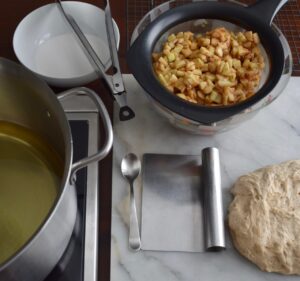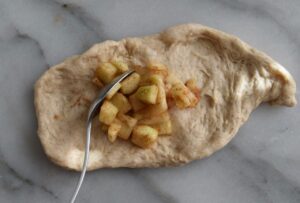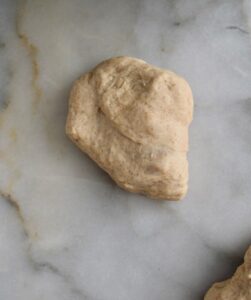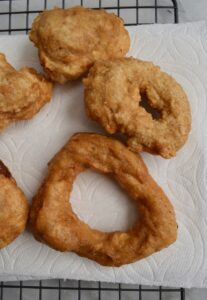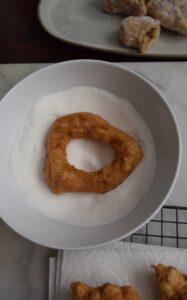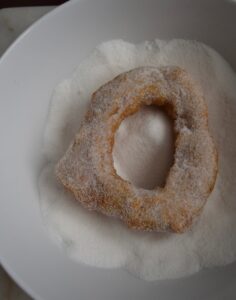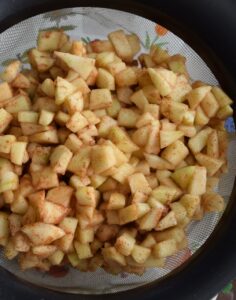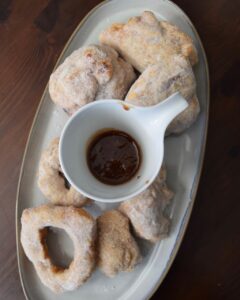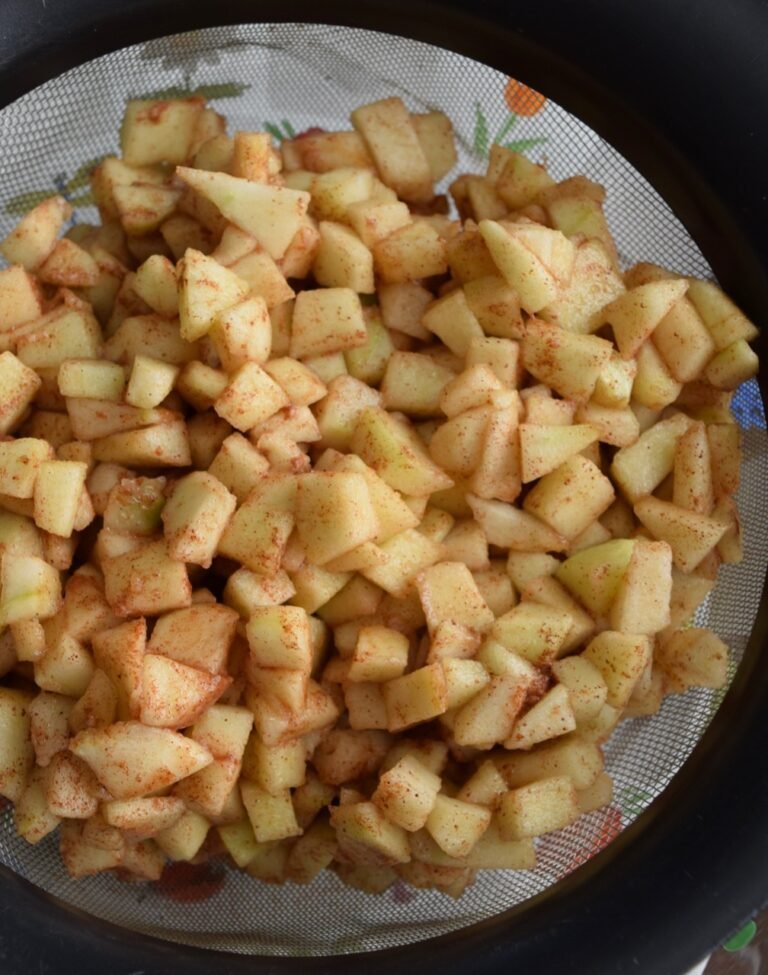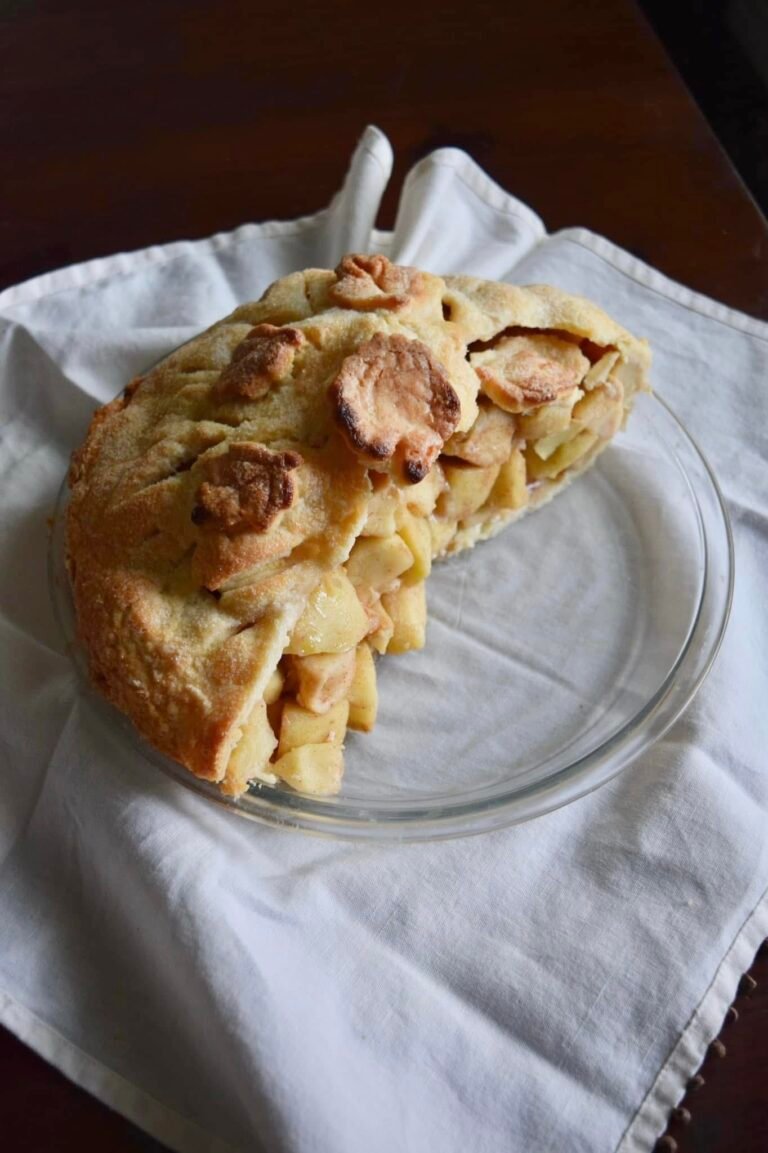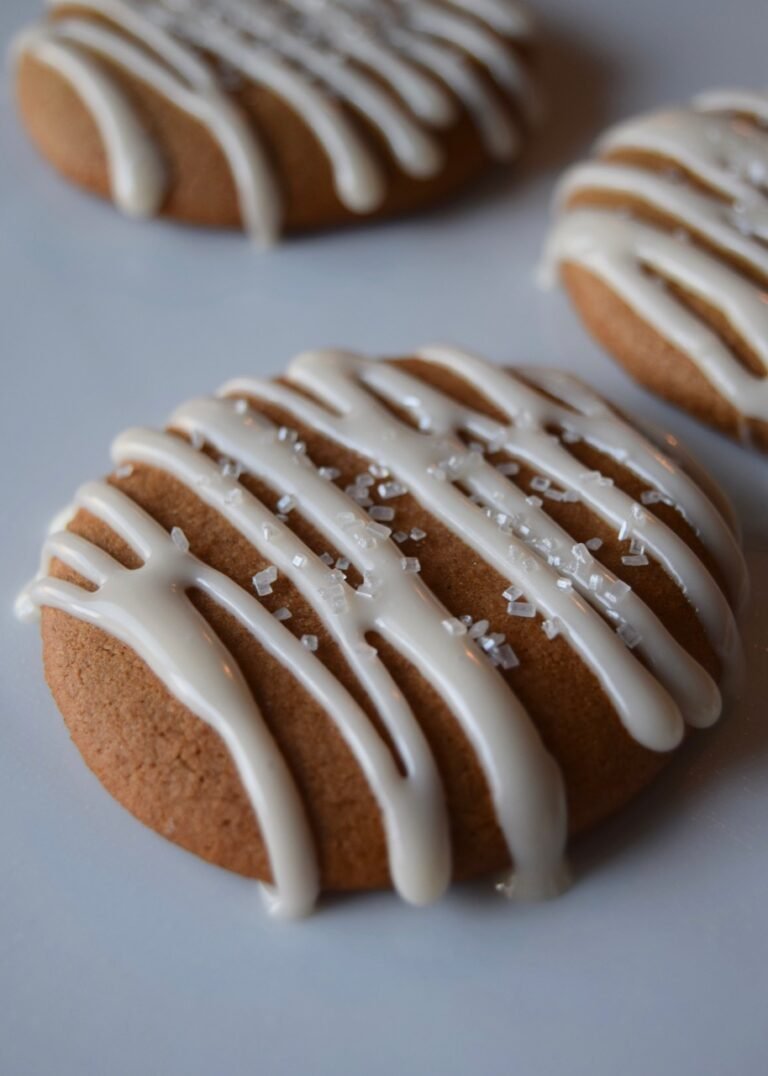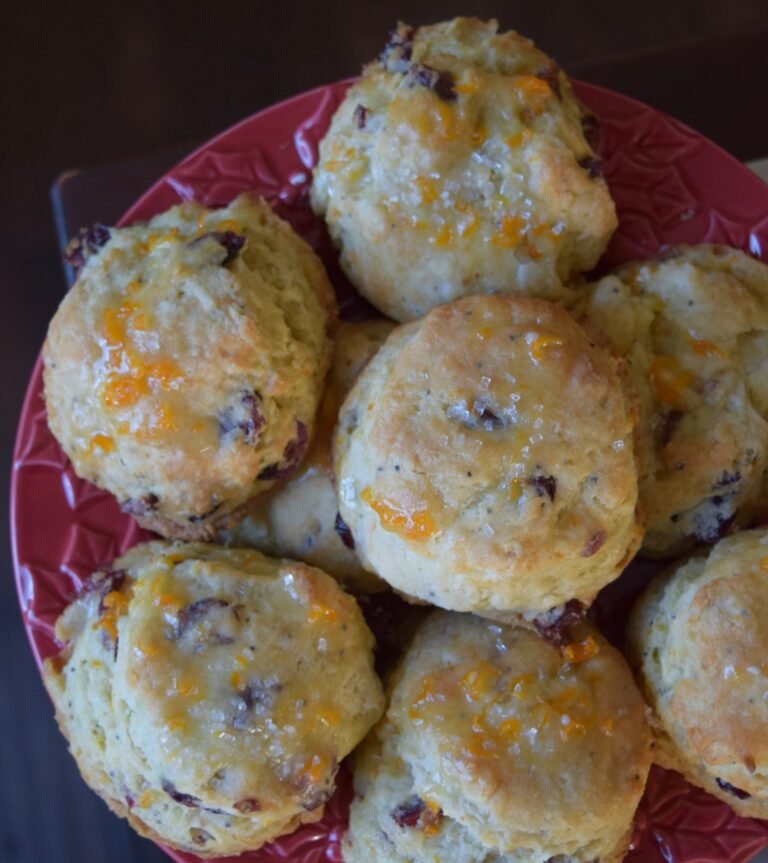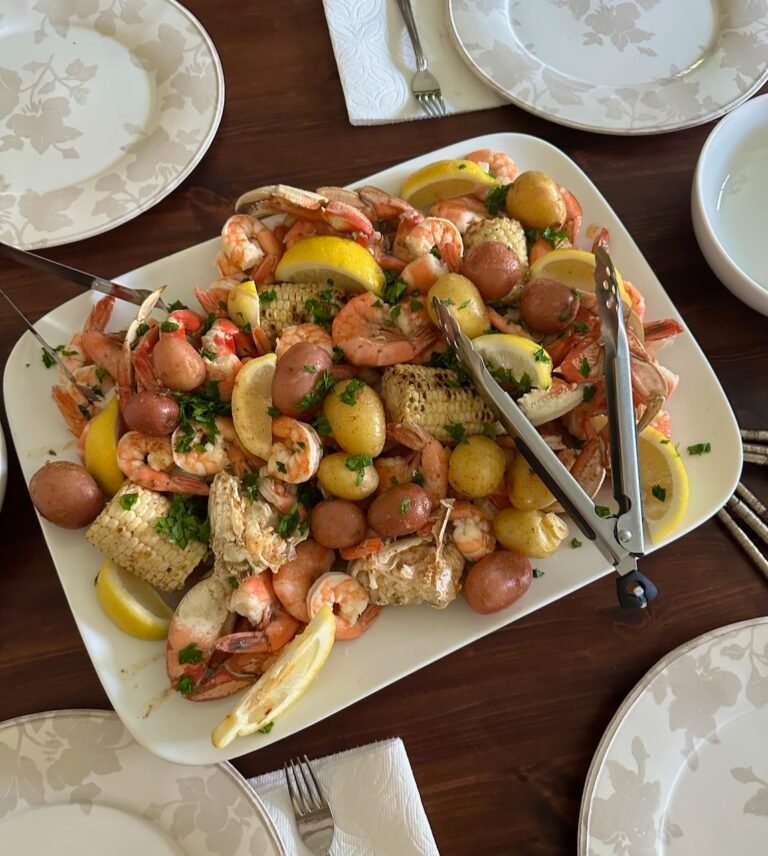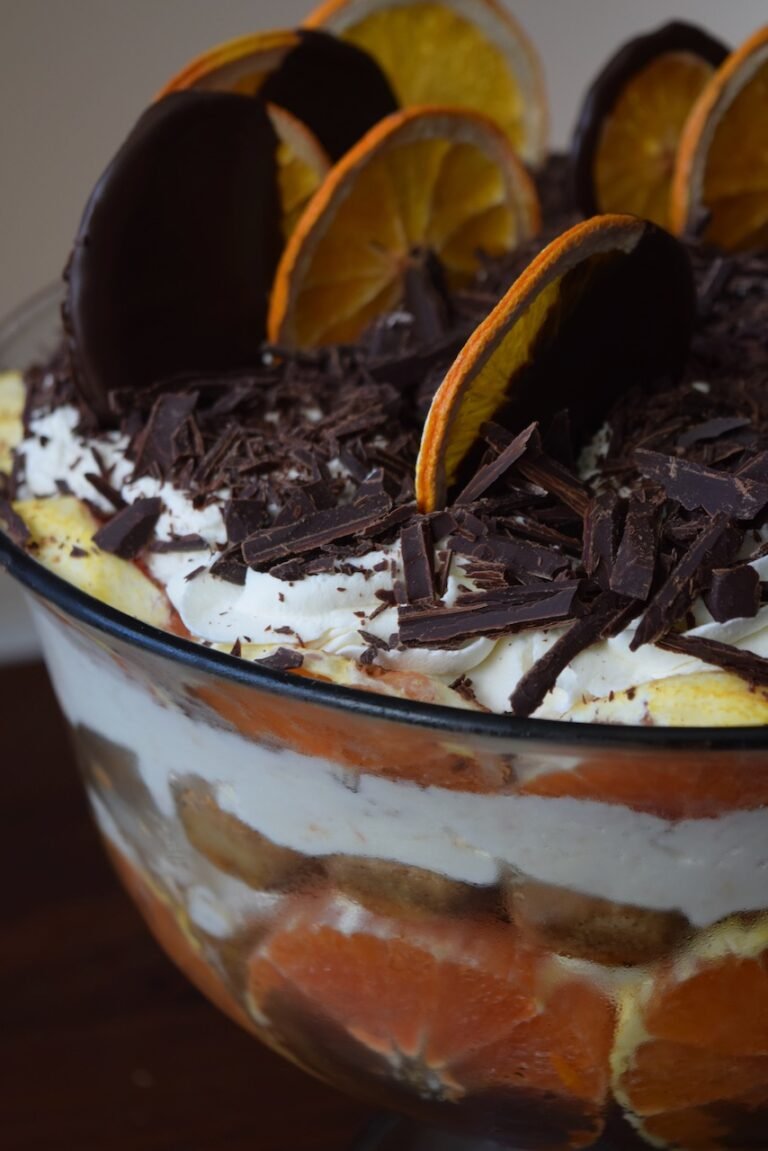With Apple Pie Frittelle, I made my Italian-American recipe-dream come true. Thought of as fry bread or rustic donuts, I make it easy, with overnight/no-knead dough, a little sugar and spice, and apple pie filling for an American twist, and the best of both worlds. This dessert is fun, absolutely delicious, and even though I’ve enjoyed frittelle my whole life, it is unique to most. I hope you enjoy this take on my roots, and this special food we make when celebrating at home.
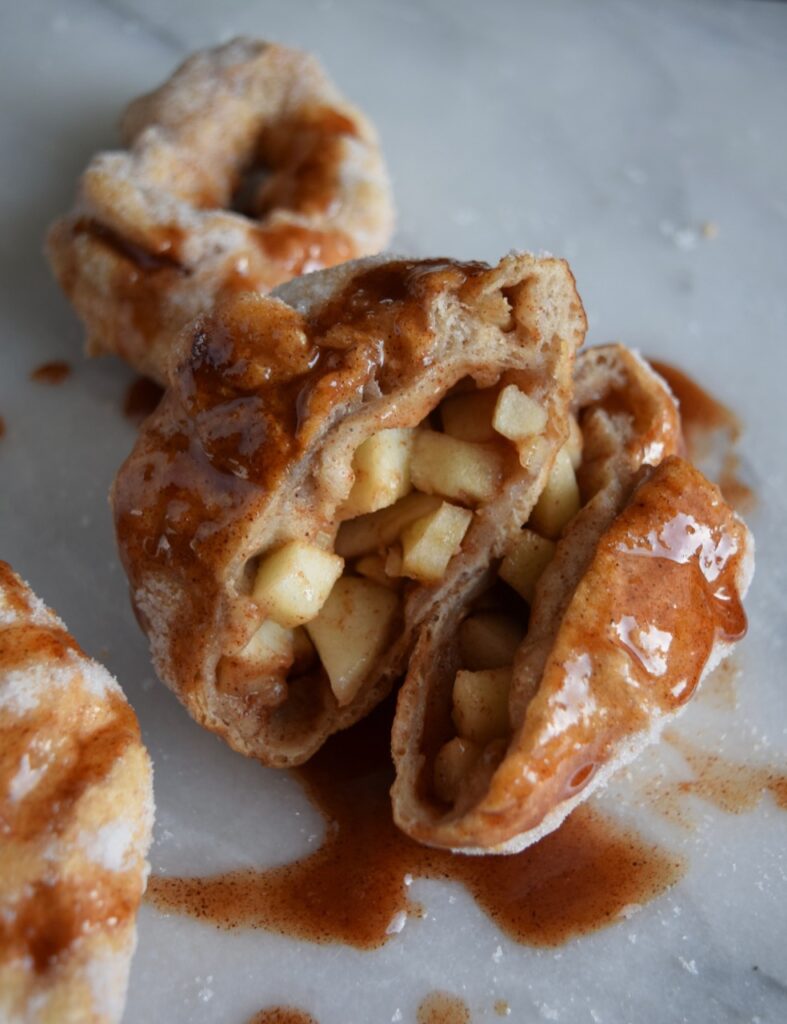
My mom, our resident Nonna, “supervised” this creation, and gives it two thumbs up! See how we put apple pie frittelle together with Nonna’s help, on my YouTube video.
Being a first-generation American and having this good food my entire life is one of my blessings. The outside will have a crispness, and the inside has layers upon layers of holes, heavenly-air and fluffiness that is best enjoyed while warm. Holes are smaller when frittelle are filled and a variety of filled and not filled are always served togther. There is no perfection in the shape or form and each will be unique.
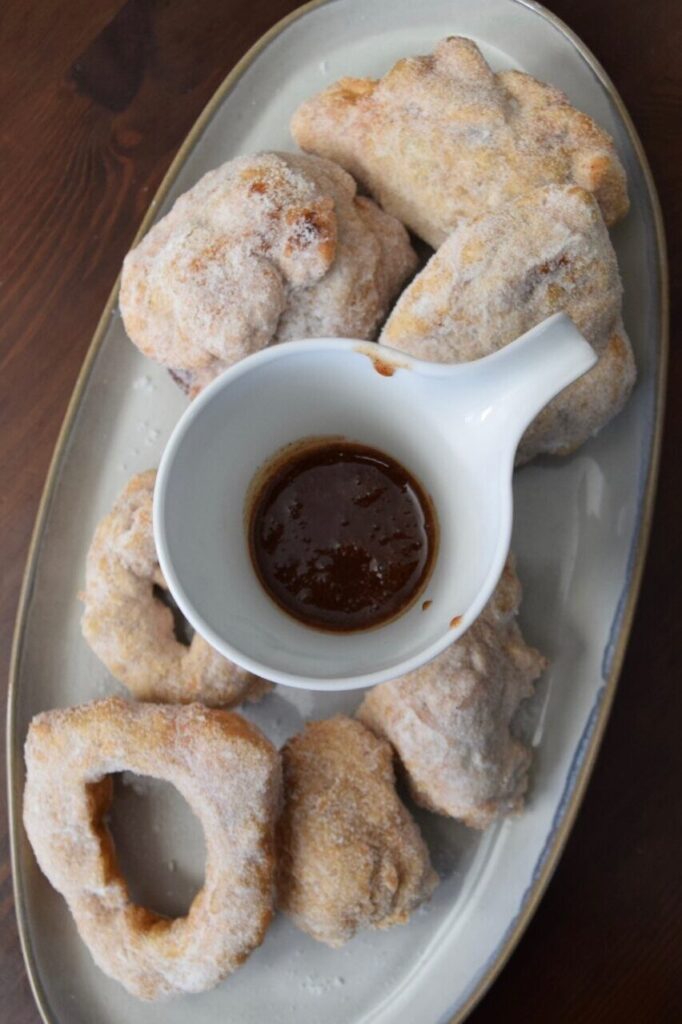

Frittelle is literally Italian fry-bread, typically made for special celebrations like holidays and religious Feast Days. What seems like a lot like a donut, tends to be made savory – fried plain, or with cheeses inside – and look and taste differently in each region and place of Italy. My Italian heritage stems from Tricarico and Bari.
I totally understand and respect that my new little recipe-invention would be scoffed at by Italian purists. This is expected and understandable. In a previous post with Nonna, I shared the old-school and true method for making Frittelle. That real-deal recipe, with traditional hand-kneaded dough, is made either as an either savory and as sweet, rustic-donut style treat, with or without a center hole, and if sweet, covered in sugar. It is all-Italian, unlike the hybrid version of this post. Nonna is old school and recognized apple pie frittelle as American, but still very good. She loves how I brought two of our favorites together.
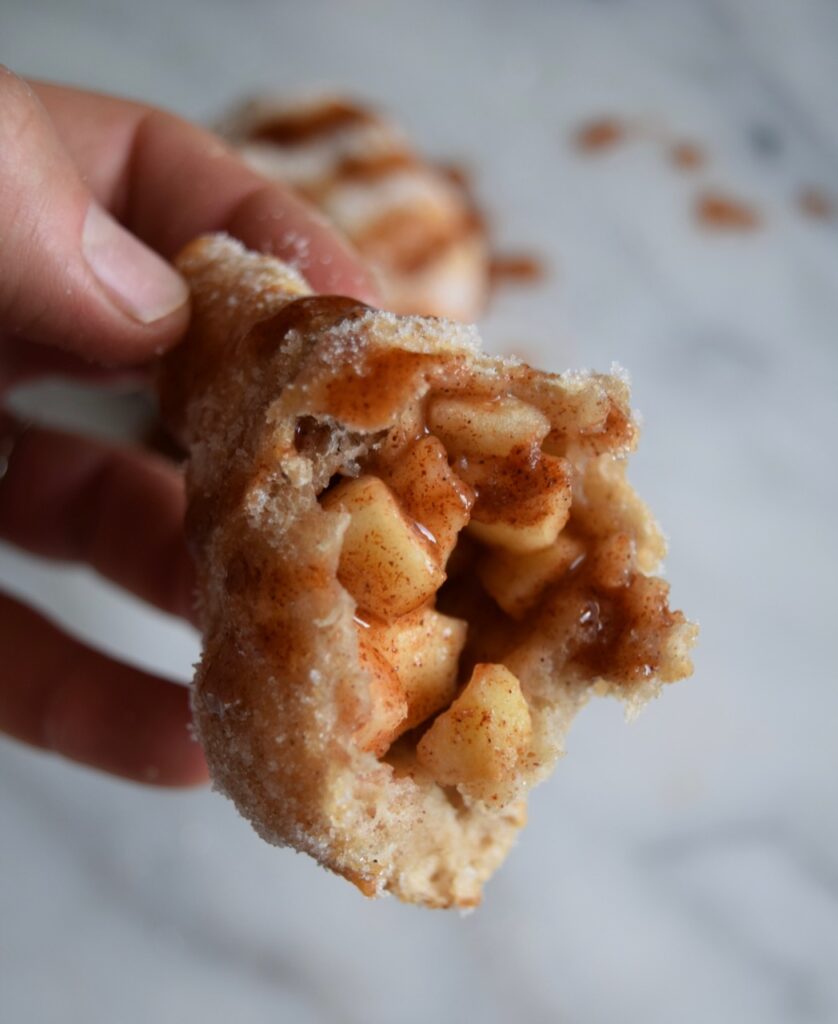
I came up with the idea of updating/Americanizing this classic on a whim, to celebrate Easter at home. First, I used a no-knead dough for this recipe, adding cinnamon-sugar, which is very easy and can be prepared overnight or about 8 hours ahead of preparing your oil for frying. Then, I took the Apple Pie filling that Nonna is the queen-of, strained it, reduced those juices to make an optional pour-over glaze for an absolute masterpiece of a dessert: Apple Pie Frittelle.
Then there is the glaze. In the true Italian way, we are not allowing any goodness go to waste, so I reserve the juices from Nonna’s apple pie filling, and simply cook it down as-is, for an incredible pour over glaze or optional dipping sauce for our apple pie frittelle. Scroll down for Nonna’s Apple Pie filling and glaze recipe.


“Andiamo!” Let’s get going to the recipe for making Frittelle, using a no-knead dough.
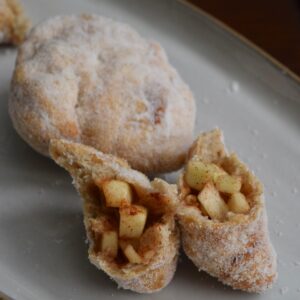
classic and apple pie frittelle, using no-knead dough
Ingredients
classic frittelle dough (with no-knead recpie)
- 3 cups all purpose flour
- 1 and 1/2 teaspoons coarse salt
- 2 teaspoons active dry yeast (one pre-measured package)
- 1 and 1/2 cups heated water Water temperature should be heated to 105-110 degrees Fahrenheit or 40-43 degrees Celsius.
add cinnamon-sugar into the dough making for apple pie frittelle
- 1 tablespoon cinnamon
- 1 tablespoon granulated sugar
prep for frying and finishing
- 1/4 cup all purpose flour for dusting
- 3 cups frying oil canola or avocado
- 1 cup granulated sugar for dipping fresh-fried bread/donuts
Instructions
- In a larger bowl, combine the flour and salt, cinnamon and sugar.
- In a glass container, heat water and use a thermometer to make sure it is at the proper temperature. Add yeast, stir to combine, cover and allow to activate for 10 minutes.
- Pour activated yeast into the dry ingredients. Use a spoon to mix together. Cover and set aside for 1-18 hours to allow it to rise before you are ready to prepare the oil for frying and making the frittelle.
- When the dough is ready, dust a flat surface with a little flour, and bring the dough into a ball. You'll want to keep your ball of dough covered in-between cutting and frying, so that it will not be compromised or dry out.

- Pour oil into a wide-bottom pot, set to medium-high heat and heat the oil to between 360-375 degrees Fahrenheit or 182-190 degrees Celsius. Get everything you need ready to go for frying. I recommend tongs, a pastry cutter, sugar ready in a bowl, a cooling rack and towel to blot oil from fresh-fried frittelle.

- Cut the dough into pieces. For plain rustic-style fry bread/donuts, you can stretch out the pieces a bit and set them aside. If you like, puncture a hole in the center.

- For filled frittelle: Stretch the dough flat without any holes, and place it onto a surface. Fill the center with enough filling so that it can be closed completely without any holes.

- Fold the dough over. Use your fingers to seal it.

- Make sure your piece is closed. If holes happen during frying, it is ok. It's just that moisture will go into the hot oil and it could spray up or make a mess. It's not the worst thing and it will not totally ruin the frittelle.

- Once the oil has come to the proper temperature: place 3-5 pieces inside the hot and prepared oil, so that they do not touch, and there is no overcrowding. You'll allow them to turn slightly golden brown before flipping. You'll notice they will float and turn a golden brown and you'll keep turning them – 2-4 times each side. You will know when because of how they look and feel when you use the tongs to turn them. Once perfectly golden, remove from the oil and set onto a cooling rack with paper or reusable cloth. Plain and center-hole frittelle will cook the fastest – about 3-5 minutes, depending on the size of your dough. Filled frittelle take longer to cook completely on the inside and on the outside. Keep and eye on them and because you are trying to avoid puncturing them, you want one side to set or be truly golden before flipping. Filled frittelle will take a couple minutes longer than plain to fry.

- For sugar-topped frittelle, you'll take them strait from the cooling rack, and into a bowl with the sugar.

- Coat both sides and serve.

- An option is to drizzle or dip with apple-pie reduction-glaze.

Video

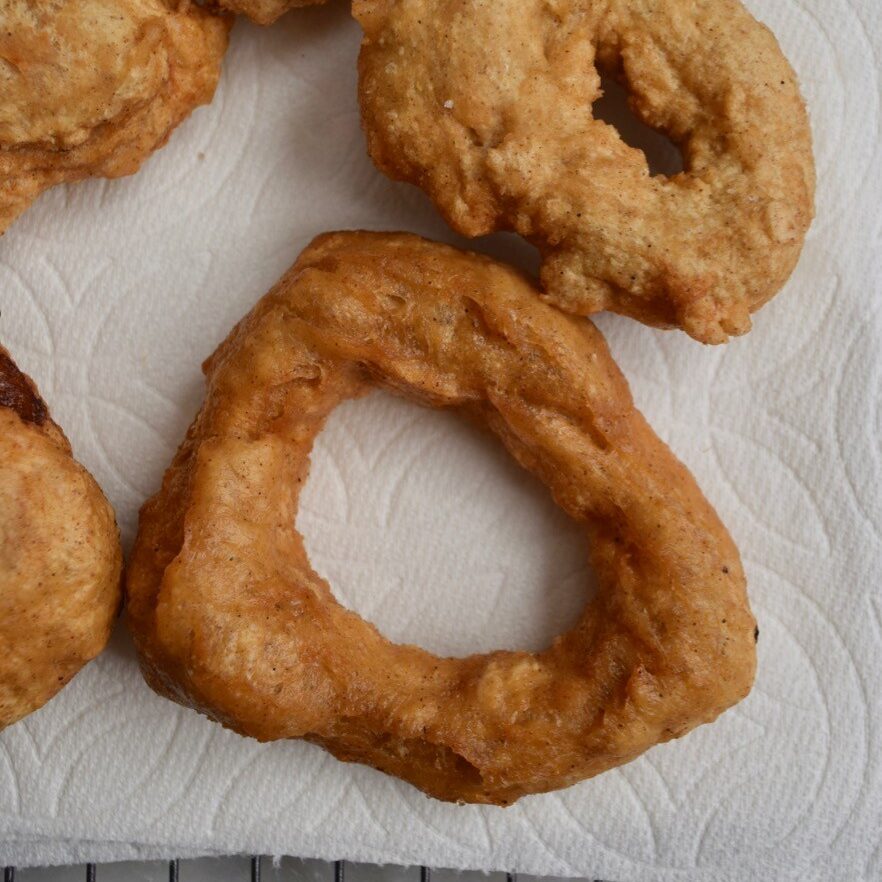
You will need Nonna’s apple pie filling recipe to make apple pie frittelle happen. Here, I tell you how to prepare the apples for making a whole pie, or frittelle. If you want to skip fry bread today, and go strait to making Nonna’s legendary apple pie, use this below and link up with my flaky-pastry pie crust.
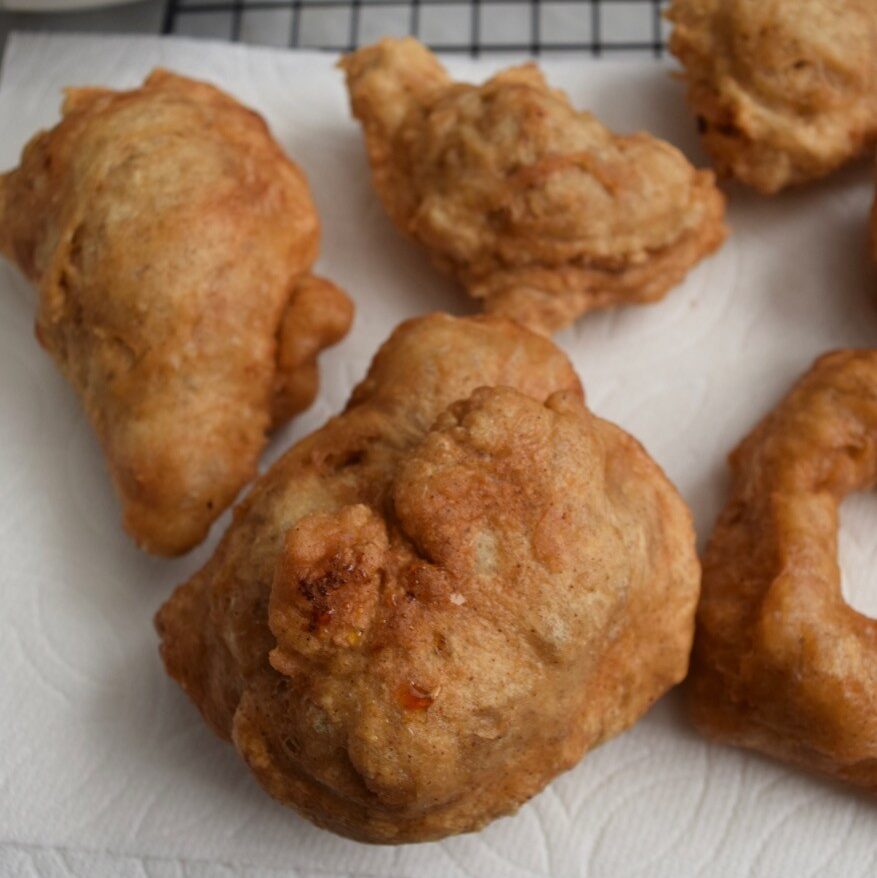

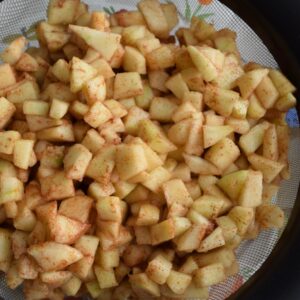
Nonna’s apple pie filling and glaze
Ingredients
- 6 Granny Smith Apples
- 2-3 tablespoons juice of a half-lemon
- 1/2 cup granulated sugar
- 1 tablespoon cinnamon
- 1/2 teaspoon salt
- 2 teaspoons all purpose flour for gluten-free apple pie filling, substitute with corn starch
Instructions
apple pie filling
- Use green, Granny Smith apples for this recipe. Clean, peel, and core each apple. You'll want uniform slices, so that the apples are just about the same texture after they are baked/cooked. For regular-sized slices for an apple pie: Cut the cored apple into half. Then cut each half into four slices the long way, and each of those pieces will be cut into four. (This renders approximately 16 pieces per half, or 32 pieces per apple.)For smaller pieces to fill frittelle: You would double the apple-pie cuts. First cut the cored apple in half, continue with four slices from the half-apple, and then cut each of those 4 slices the long way to make 8. You will cut them into four cube-like pieces. (This renders approximately 32 pieces per half, or about 64 pieces per apple.)
- Place the cut apples into a gallon sized plastic bag, or reusable, sealable container.
- Add the juice of a whole lemon, sugar, cinnamon, salt, and an all-purpose flour of your choice.
- Seal your container and move the ingredients around to completely mix and cover the apples. All of the sugars should be dissolved and there will be liquid. Allow the apples to soak/marinate in the fridge for about an hour.
- Strain most (for apple pie) or all of the juices (for frittelle) from the apples.

pour-over reduction – to use as glaze or dipping sauce
- Reserve/keep the juices of the strained apple pie filling, if you want to make a pour-over reduction/glaze.

- To make a pour-over glaze pour the juices into a pan. At medium heat, cook until bubbly and thicker than before. Place into a container to pour over fresh-made desserts, or to use as a dipping sauce.

This was so fun to make, and it was a bonus to have some quality time with my family in the process. I loved sharing this and being with Nonna when she can be the boss, is always a treat.
Take care,


